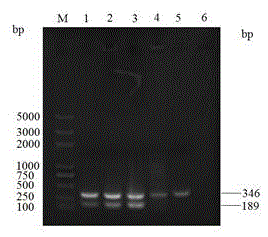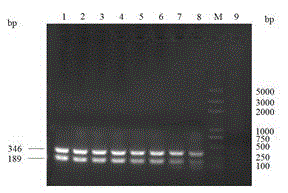Primer pair for detecting caprine parainfluenza virus type 3 (CPIV3) and peste des petits ruminants virus (PPRV)
A technology of Peste des petits ruminants and primer pairs, applied in the field of animal virology and zoonotics
- Summary
- Abstract
- Description
- Claims
- Application Information
AI Technical Summary
Problems solved by technology
Method used
Image
Examples
Embodiment Construction
[0036] 1 Primer design and synthesis
[0037] CPIV3 is a newly discovered virus in the laboratory. Although it has been publicly published before, it has not been publicly released. PPRV has been very harmful since it was introduced to most provinces in China in 2014. Both are the main pathogens that cause goat respiratory disease. There are mixed infections, and molecular biology methods are needed to distinguish the two. At present, there is only a RT-PCR method for detecting PPRV in clinical practice. However, the RT-PCR method for detecting CPIV3 alone and detecting both CPIV3 and PPRV has not been put into application.
[0038] Primer design is the key to determining the success or failure of multiplex PCR. The present invention through long-term research and systematic research on the newly discovered virus CPIV3 in our laboratory, through sequence analysis and comparison, respectively selects the conserved regions of CPIV3M protein gene and PPRVN protein gene for primer des...
PUM
 Login to View More
Login to View More Abstract
Description
Claims
Application Information
 Login to View More
Login to View More - R&D
- Intellectual Property
- Life Sciences
- Materials
- Tech Scout
- Unparalleled Data Quality
- Higher Quality Content
- 60% Fewer Hallucinations
Browse by: Latest US Patents, China's latest patents, Technical Efficacy Thesaurus, Application Domain, Technology Topic, Popular Technical Reports.
© 2025 PatSnap. All rights reserved.Legal|Privacy policy|Modern Slavery Act Transparency Statement|Sitemap|About US| Contact US: help@patsnap.com



